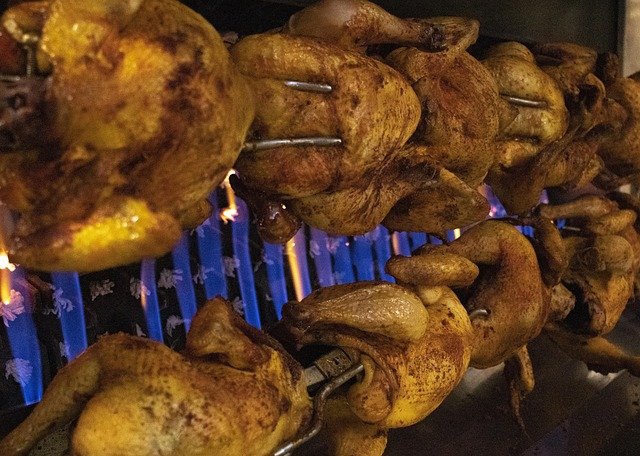Savoring the Smokehouse: A Culinary Journey Through American BBQ
Embark on a mouthwatering adventure through the diverse world of American barbecue. From slow-smoked brisket to tangy pulled pork, discover the regional flavors, techniques, and traditions that make this cuisine a beloved staple across the United States. Get ready to fire up your taste buds and explore the art of low-and-slow cooking.

The Four Major BBQ Styles
American barbecue can be broadly categorized into four main regional styles, each with its own distinct characteristics. Texas-style barbecue is known for its beef-centric approach, with brisket being the star of the show. Dry rubs and minimal sauce are used to let the meat’s natural flavors shine. Kansas City-style barbecue, on the other hand, is all about the sauce – thick, sweet, and tomato-based. It’s typically applied to a variety of meats, including pork, beef, and chicken. Memphis-style barbecue focuses on pork, particularly ribs, which are often served “dry” with a spice rub rather than sauce. Finally, Carolina-style barbecue is divided into two sub-regions: North Carolina, which favors a whole-hog approach with a vinegar-based sauce, and South Carolina, known for its mustard-based “gold” sauce.
The Art of Low and Slow
The key to great barbecue lies in the cooking method: low and slow. This technique involves cooking meat at low temperatures (usually between 225°F and 275°F) for extended periods, often 12 hours or more. This slow cooking process allows tough cuts of meat to become tender and flavorful as the collagen breaks down and fat renders. Maintaining a consistent temperature is crucial, which is why many pitmasters swear by traditional offset smokers or ceramic kamado-style grills. The type of wood used for smoking also plays a significant role in the final flavor profile. Hickory, oak, and mesquite are popular choices, each imparting its own unique character to the meat. Mastering the art of low and slow cooking requires patience, practice, and a deep understanding of fire management.
Beyond the Meat: Sides and Sauces
While the meat may be the star of the show, no barbecue feast is complete without an array of delicious sides and sauces. Traditional accompaniments include coleslaw, baked beans, cornbread, and mac and cheese. These sides not only complement the rich, smoky flavors of the meat but also provide a balance of textures and flavors. Sauces are another crucial element of barbecue culture, with each region boasting its own signature style. From the thick, sweet Kansas City sauce to the tangy, vinegar-based North Carolina version, these condiments can make or break a barbecue dish. Many pitmasters take pride in creating their own unique sauce recipes, often guarding them as closely-held secrets.
The Rise of Competition BBQ
In recent years, competitive barbecue has grown from a niche hobby to a full-fledged sport, with thousands of teams competing in events across the country. These competitions, sanctioned by organizations like the Kansas City Barbeque Society, pit pitmasters against each other in categories such as brisket, pork ribs, chicken, and pork shoulder. Judges evaluate entries based on appearance, taste, and tenderness, with strict rules governing everything from presentation to cooking methods. The competitive barbecue scene has not only raised the bar for quality but has also led to innovations in techniques and flavors. Many champion pitmasters have gone on to open successful restaurants or launch their own line of barbecue products, further elevating the profile of this beloved cuisine.
BBQ Tips & Tricks
-
Always let your meat come to room temperature before cooking
-
Use a meat thermometer to ensure proper internal temperature
-
Allow meat to rest after cooking for juicier results
-
Experiment with different wood types for unique flavor profiles
-
Don’t rush the process – patience is key in barbecue
-
Consider using a water pan in your smoker for moisture control
-
Wrap your meat in butcher paper or foil to push through the “stall”
-
Clean your grill or smoker regularly for optimal performance
As we’ve journeyed through the smoky world of American barbecue, it’s clear that this cuisine is far more than just a cooking method – it’s a passion, an art form, and a cultural touchstone. From the diverse regional styles to the meticulous techniques required for perfect low-and-slow cooking, barbecue offers endless opportunities for exploration and experimentation. Whether you’re a seasoned pitmaster or a curious novice, the world of American BBQ invites you to fire up the grill, embrace the smoke, and savor the delicious results of this time-honored tradition.




